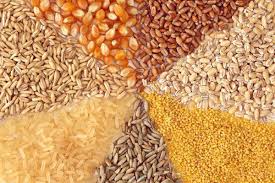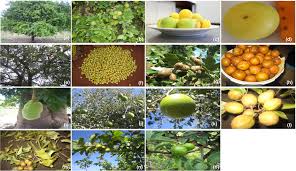The Nigerian ecosystem is rich in indigenous biotic components. An index of 7,895 plant species identified in 338 families, 2,215 genera, and 22,000 animal species confirms that the country is endowed with a variety of plant and animal species.
These animal and plant species occur in different numbers within the country’s vegetation, sustaining the rural economy. There are also exotic species which have adjusted to the climatic conditions; they make up part of the biotic community.
It has been reported that in the wildlife diversity of Nigeria, about 0.14% and 0.22% are threatened and endangered, respectively.
In attempts to protect biodiversity, Nigeria established several protected areas including 8 national parks, 445 forest reserves, 12 strict nature reserves, and 28 game reserves.
Read Also: 5 Amazing Health Benefits of Triphala (Three fruits)
Local Species of Cereal Crops in Nigeria

Cereal crops are interchangeably called grain crops. In many publications and correspondence, they are simply called grains or cereals.
As of 2012, the top five bowls of cereal in the world ranked based on production tonnage are maize (corn), rice (paddy), wheat, barley, and sorghum.
These crops are also among the top 50 agricultural commodities in the world with maize ranking second next to sugarcane.
Rice (paddy) ranks third, wheat – fourth, barley – twelfth, and sorghum – thirtieth. Another cereal, millet, ranks number 42 (FAOSTAT, 2014).
Examples of Cereal Crops
| S/No | Local Cereals | English Name | Local Name | Part Used |
|---|---|---|---|---|
| 1 | Oryza sativa | Rice | Edesi | Seeds |
| 2 | Sorghum vulgare | Guinea Corn | – | Seeds |
| 3 | Zea mays | Maize | Oka | Seeds |
| 4 | Pennisetum glaucum | Millet | – | Seeds |
| 5 | Triticum | Wheat | – | Seeds |
| 6 | Digitaria ibura | Acha | – | Seeds |
Local Species of Leguminous Crops in Nigeria

Africa has a vast array of indigenous legumes, ranging from large rainforest trees to small annual herbs.
Examples of Leguminous Crops
| S/No | Local Legumes | English Name | Local Name | Part Used |
|---|---|---|---|---|
| 1 | Glycine max | Soybean | – | Seeds |
| 2 | Vigna unguiculata | Cowpea | Nsama | Seeds |
| 3 | Phaseolus vulgaris | Common bean | Okofi | Seeds |
| 4 | Mucuna pruriens | Velvet beans | Ibaba | Seeds |
| 5 | Sphenostylis stenocarpa | African Yam Bean | Ahuma | Seeds |
Read Also: How Guava Fruits and Leaves Improve Female Fertility
Local Species of Fruit Trees in Nigeria

Fruit trees constitute important biological resources in many agroecological systems and forest ecosystems all over the world.
Fruits are full of nature’s rich essential nutrients, antioxidants, and health benefits for ready use by humans (and other animals) without alteration in most cases, unlike vegetables and other edible agricultural/horticultural produce that may require necessary pre-treatments, like heating, sometimes before consumption.
Examples of Local Fruit Trees
| S/No | Local Fruit Trees | English Name | Local Name | Part Used |
|---|---|---|---|---|
| 1 | Chrysophyllum albidum | Star Apple | Udara | Fruits |
| 2 | Dacryodes edulis | African Pear | Eben | Fruits |
| 3 | Persea americana | Avocado | Eben Mbakara | Fruits |
| 4 | Treculia africana | African Breadfruit | Adian | Seeds |
| 5 | Mangifera indica | Mango | Mango | Fruits |
| 6 | Irvingia gabonensis | Bush Mango | Uyo | Fruit/Seeds |
| 7 | Carica papaya | Pawpaw | Udia Edi | Fruits |
| 8 | Eugenia owarensis | Apple | Apple | Seeds |
| 9 | Citrus sinensis | Oranges | Alum | Fruits/Seeds |
| 10 | Garcinia kola | Bitter Kola | Efiat | Seed |
These native species may not necessarily represent the entire floral community in the country. There are many others that may not gain as much popularity depending on their location and usage but constitute remarkable components of the floral community.
Though Nigeria has vast biodiversity, it is not evenly distributed. Flora and fauna diversity depends on climate, altitude, soils, and the presence of other species.
This measure is higher in the tropics than in other localised regions. When a wide diversity of species is maintained, the web of life that sustains all biota is preserved.
Do you have any questions, suggestions, or contributions? If so, please feel free to use the comment box below to share your thoughts. We also encourage you to kindly share this information with others who might benefit from it. Since we can’t reach everyone at once, we truly appreciate your help in spreading the word. Thank you so much for your support and for sharing!
